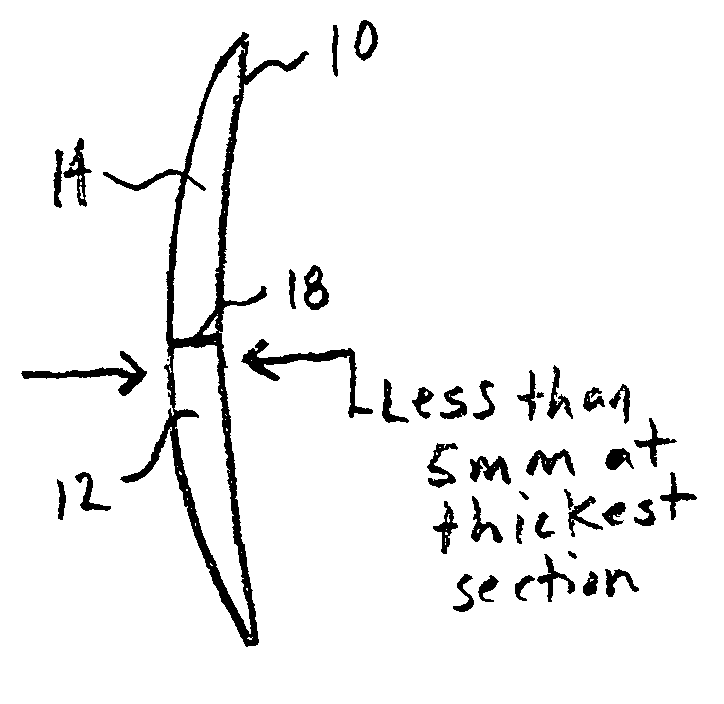Methods and apparatus for lenses and glasses
a technology for glasses and lenses, applied in the field of glasses, can solve the problems of inability to combine lenses with such lenses, unsuitable users, and relatively high cost of computer lenses and glasses
- Summary
- Abstract
- Description
- Claims
- Application Information
AI Technical Summary
Benefits of technology
Problems solved by technology
Method used
Image
Examples
Embodiment Construction
[0021]FIG. 1 illustrates a particular embodiment of a lens according to the teachings of the present invention. As shown, lens 10 includes a near vision segment 12 and an intermediate vision segment 14. Near vision segment 12 has a magnification power of N, and intermediate vision segment 14 has a magnification power of I. Segments 12 and 14 are also referred to generally as viewing segments.
[0022]The lens 10 shown in FIG. 1 is an executive style lens, and thus has a line that abruptly separates segments 12 and 14. As shown in FIG. 2, the lens may also be formed as lens that has a smaller near vision segment 12, which may be, for example and without limitation, a flat top segment, a round segment, a curve top segment, a blended segment, or a progressive segment. What ever type of segment 12 is chosen, the segment 12 may be formed anywhere in the lens, and thus may be as low or high on the lens (in relation to the face of a wearer) as desired, and may be as large or small as desired....
PUM
 Login to View More
Login to View More Abstract
Description
Claims
Application Information
 Login to View More
Login to View More - R&D
- Intellectual Property
- Life Sciences
- Materials
- Tech Scout
- Unparalleled Data Quality
- Higher Quality Content
- 60% Fewer Hallucinations
Browse by: Latest US Patents, China's latest patents, Technical Efficacy Thesaurus, Application Domain, Technology Topic, Popular Technical Reports.
© 2025 PatSnap. All rights reserved.Legal|Privacy policy|Modern Slavery Act Transparency Statement|Sitemap|About US| Contact US: help@patsnap.com


